|
Oil Prices Slip on OPEC Deal Disappointment

As OPEC's latest meeting concludes in Vienna, just a glimpse at the charts below helps explain why the cartel's production cut deal has been extended for another nine months: it hasn't worked so far.
For all the talk of near-perfect compliance from OPEC, we have consistently highlighted how the cartel has kept global markets well-supplied, as apparent production cuts have not been reflected through to broad-based and consistently lower exports.
We discussed last week how U.S. oil imports from OPEC were holding up. Deliveries to the U.S. in May have now lifted above year-ago levels, meaning OPEC deliveries have been higher than year-ago levels for every month of this year, up 11 percent on aggregate.
|
|
|
As the U.S. Sends More Oil to World, OPEC Sends Less to U.S.

OPEC is finally making the move that could help complete a mission that it's failed so far: shipping less oil to the U.S., according to Sanford C. Bernstein.
Exports from the Organization of Petroleum Exporting Countries to America have declined by close to 1 million barrels a day since a peak at the end of March, Bernstein analysts including Neil Beveridge wrote in a May 25 report. The group, including top producer Saudi Arabia, understands that reducing cargoes to the U.S. is the top priority if it's to reach the goal of shrinking a global inventory glut, they said.
OPEC is curbing its supplies just as the U.S. threatens to eat into the group's market share in its traditional strongholds such as Asia, the world's biggest oil consuming region. The group's problems have also been compounded by a spike in shipments to developed nations at the end of last year, just before a six-month output cut deal with some allies including Russia went into effect in January. That means global inventories have increased rather than shrunk since the curbs were announced, according to Bernstein.
|
|
Asia's First Fully-Automated Terminal Operational
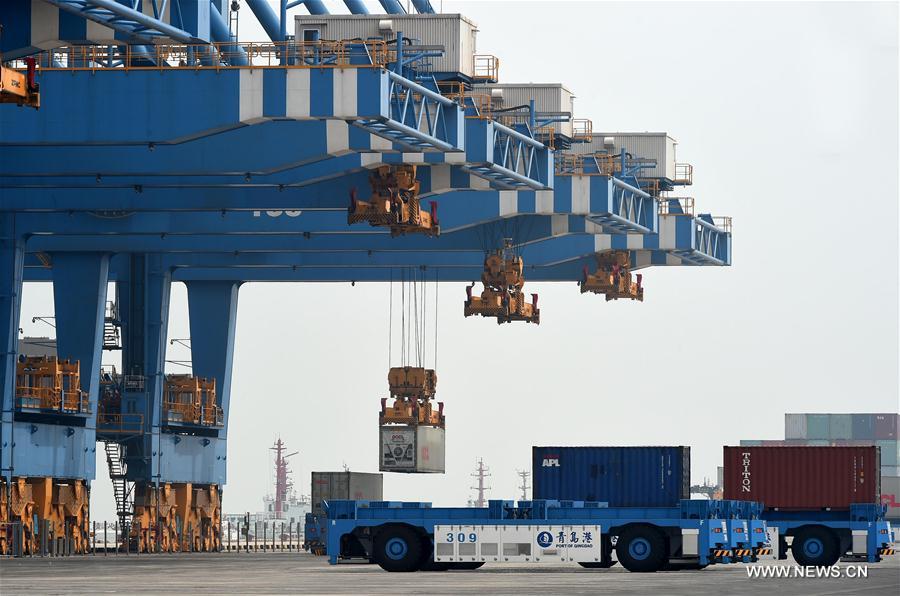
Qingdao New Qianwan Container Terminal in China has become Asia's first fully automated container terminal after servicing the 13,386 TEU Cosco France on May 11.
Locals refer to it as the "ghost port" after watching its machines and trucks operating day and night to unload the vessel without people in sight.
"It's all controlled by artificial intelligence," said technician Yang Jiemin. "Through laser scanning and positioning, the program is able to locate the four corners of each container. It then accurately grabs them and puts them onto the driverless trucks. That's why it's able to work in complete darkness. These smart autopilot trucks, driven by electricity, have their routes and tasks under digital control. They even know when it's time to go for a recharge.
The days of high labor costs and bottlenecks at the port's entrance are now a thing of the past, says general manager Zhang Liangang. "Labor costs have been reduced by 70 percent because of this automatic terminal, while efficiency increased by 30 percent, because we can work at night."
|
|
Baltic Dry Index Sinks to Lowest Level Since March
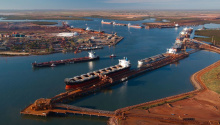
The Baltic Exchange's main sea freight index, tracking rates for ships carrying dry bulk commodities, fell to its lowest in nearly three months on Wednesday on weaker demand across all vessel segments.
The overall index, which factors in rates for capesize, panamax, supramax and handysize shipping vessels, was down 15 points, or 1.58 percent, at 934 points - its lowest level since early March.
The capesize index lost 52 points, or 3.05 percent, at 1,654 points.
Average daily earnings for capesizes, which typically transport 150,000-tonne cargoes such as iron ore and coal, were down $331 at $12,177.
The panamax index was down one point, or 0.12 percent, at 849 points.
|
|
2016 Cruise Numbers Exceed Expectations
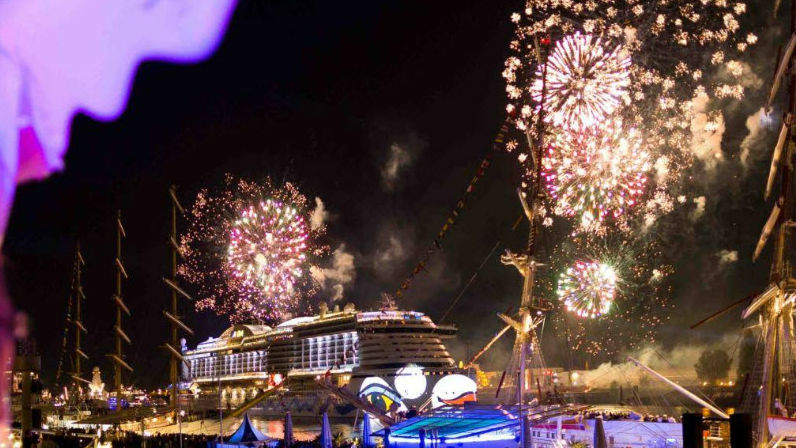
The cruise industry has surpassed 2016 ocean cruise passenger projections, reaching 24.7 million cruise passengers globally up from a projection of 24.2 million.
For 2017, based on current new vessel launch schedule and expected regional deployment, Cruise Lines International Association (CLIA) is projecting another positive year of growth for the industry with a passenger forecast of 25.8 million.
Much of the industry's growth can be attributed to the continuing development of the Asian market, with ocean capacity rising to 9.2 percent in 2016, a 38 percent increase from 2015. The increased capacity in the region, combined with travelers in this region going on shorter, and more frequent cruises, has kept this marketplace at the top of emerging markets within the cruise industry.
|
|
LNG Bunkering Set to Fuel a Favourable Future in Asia
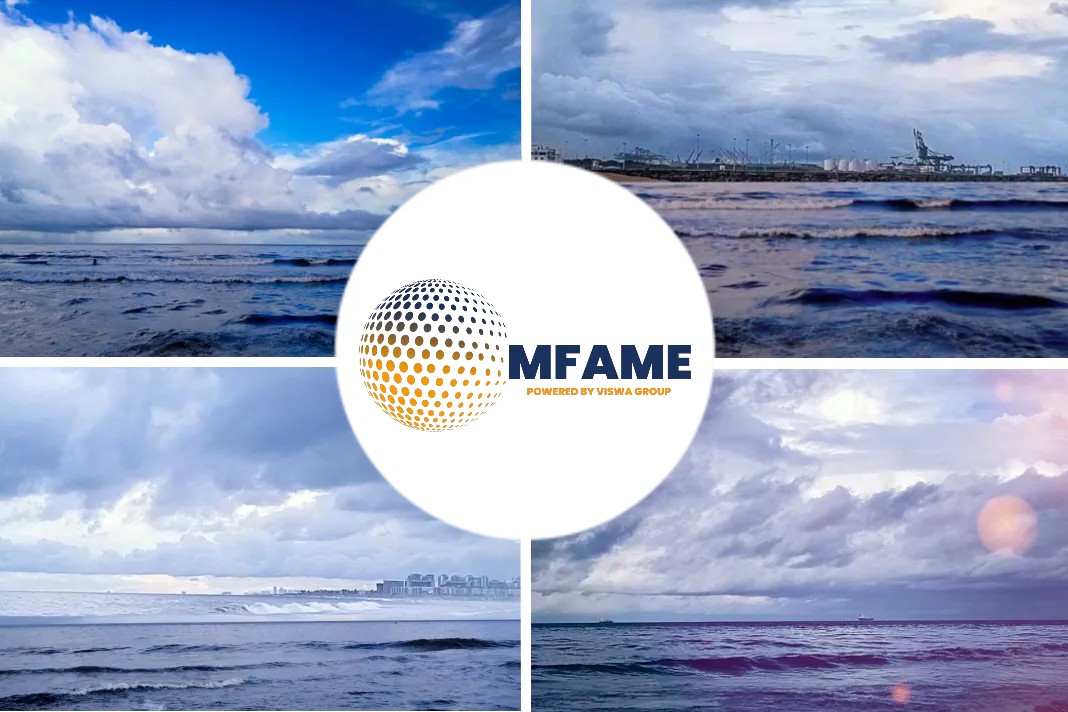
The liquefied natural gas (LNG) bunkering market in Asia is gearing up for growth in the next two to three years. This is largely due to the implementation of stricter environmental regulations across the globe to improve the emissions performance of shipping companies.
In particular, the International Maritime Organisation's (IMO) 2020 deadline for a fuel sulphur cap of 0.5 per cent means there is growing impetus for the industry to resolve the structural and commercial obstacles that have been hindering the widespread adoption of LNG as a marine fuel.
Although there are several compliant solutions for the industry, such as the use of exhaust gas cleaning systems (also known as scrubbers) and low sulphur marine fuels, LNG provides a more future-fit solution that is able to meet the new regulations because of its better emissions performance.
|
|
Hapag-Lloyd and UASC Merger Is Complete
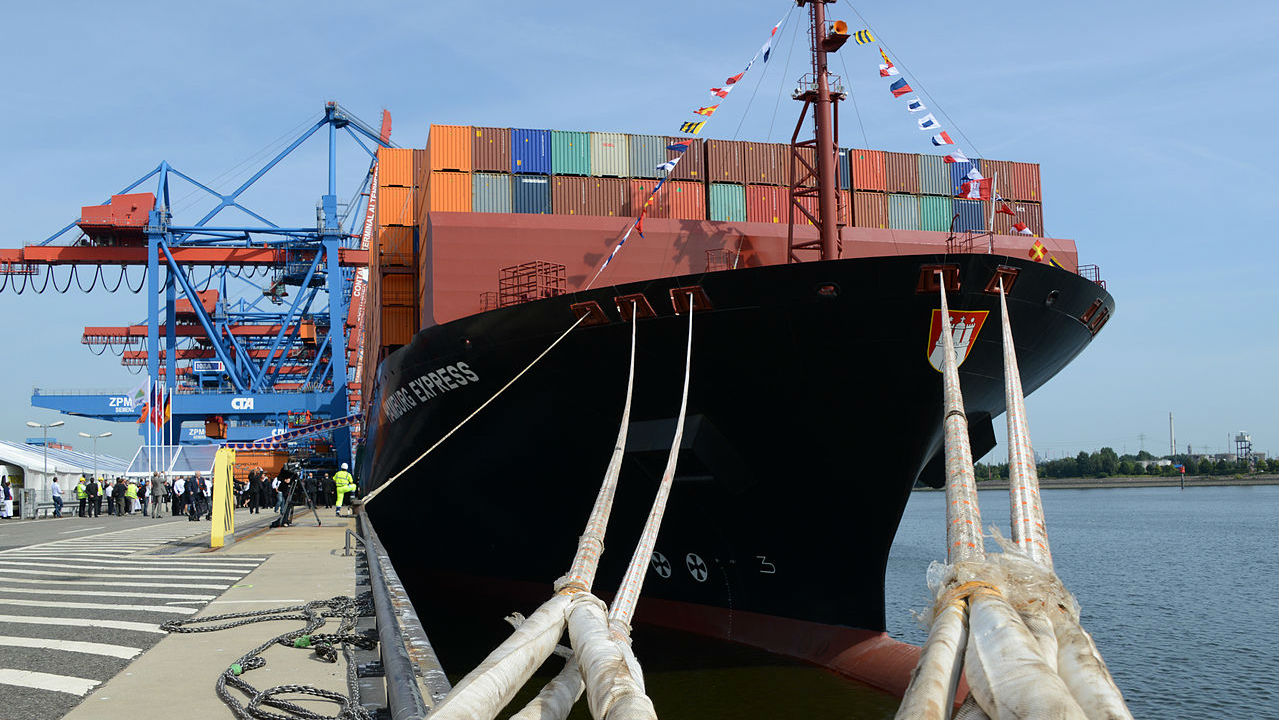
On Wednesday, Hapag-Lloyd completed its long-awaited merger with UASC and turned its attention to integrating the world's twelfth-largest container line into its business.
The merger is expected to reduce overhead by about $430 million annually, and Hapag-Lloyd says that it will relieve the need to invest in newbuildings for several years. The combined entity will control more than seven percent of the world's capacity by TEU.
CEO Rolf Habben Jansen notes that Hapag will retain its leadership in Latin America and the Atlantic, and will now have a particularly strong position in the Middle East thanks to UASC's regional presence.
The parties agreed to the merger last July and it was scheduled to be finalized by the end of March, but issues related to UASC's creditors prevented Hapag from completing it until this week. The operations of all 45 UASC services and 58 UASC vessels should be fully integrated into Hapag's service routes by the fall of 2017. At that point, all transactions that currently occur on UASC's IT platforms will shift over to Hapag-Lloyd's systems.
|
|
On-Demand Container Shipping

Digitalisation will eventually mean that ocean transport of containers will be organized in a much more efficient manner. If the 'line' part of container shipping has no place in a modern digitalized world, where does this leave the operators? Roar Adland, shipping chair professor at the Norwegian School of Economics delves into the future of the box trades.
While the container has no doubt revolutionized the world of ocean freight, it is interesting to note that the business model of liner shipping really is a legacy system. Basically the previous system of fixed sailing frequencies was continued from the days of the passenger and freight steamers, harking back to the days of the British Empire. Malcolm McLean's box didn't revolutionize everything. My take is that the next stage of the container revolution will change this too.
Let me go out on a limb and claim that buyers of ocean freight don't really care about sailing frequency - they might not even care all that much about transit times, depending on what's inside the box.
|
|
Hana, Dubai, Singapore and Antwerp Ports Share Ideas on Efficient Port
 Professionals in the maritime industry have deliberated on how the ports of Ghana can be made more efficient so as to enhance its competitiveness in the West African sub region at a presidential conference in Accra.
The conference, which was organised by the office of the vice President, was aimed at evaluating the efficiency of Ghana's ports, receive recommendations from industry players on the kind of structures and policies to be rolled out to increase productivity and ensure Ghana's business competitiveness.
The Director-General of the Ghana Ports and Harbours Authority, Paul Asare Ansah said the port authority has deployed several automation processes to increase its efficiency.
Professionals in the maritime industry have deliberated on how the ports of Ghana can be made more efficient so as to enhance its competitiveness in the West African sub region at a presidential conference in Accra.
The conference, which was organised by the office of the vice President, was aimed at evaluating the efficiency of Ghana's ports, receive recommendations from industry players on the kind of structures and policies to be rolled out to increase productivity and ensure Ghana's business competitiveness.
The Director-General of the Ghana Ports and Harbours Authority, Paul Asare Ansah said the port authority has deployed several automation processes to increase its efficiency.
|
| Please let us know if we can be of any assistance with any of your fuel or lubricant oil needs. We hope your vessels are having success out there and look forward to working with you in the near future. |
|
 |
|
Bunker Price Indications
*Prices are indications only. Please contact us for firm pricing.
|
|
|
Weekly Tanker Update
|
|
Clipper Oil offers a weekly update with the latest positions of the high-seas fuel tankers working throughout the Pacific.
To view the latest positions of our high-seas tankers, please click here.
To be added to our weekly high-seas tanker email distribution list, please click here.
|
|
|
Contact Us 24/7
USA Headquarters 2040 Harbor Island Drive Suite 203 San Diego, CA 92101 USA Tel: +1-619-692-9701 Fax: +1-619-398-0810 Singapore Office 8 Eu Tong Sen Street #23-86, The Central Singapore, 059818 Tel: +65-6646-5367
Fax: +65-9640-7998
bunkers@clipperoil.com
|
|
|
Pacific Ocean Specialists

|
|
|
|
|